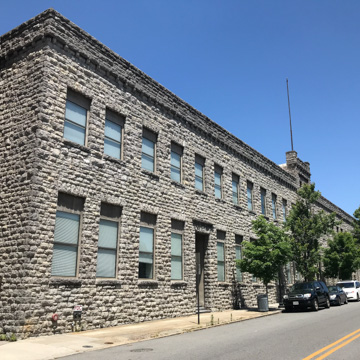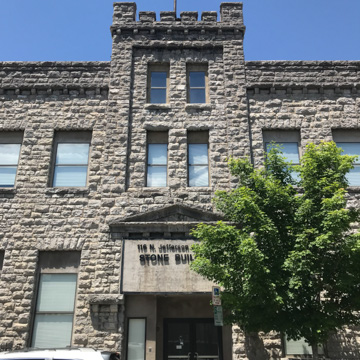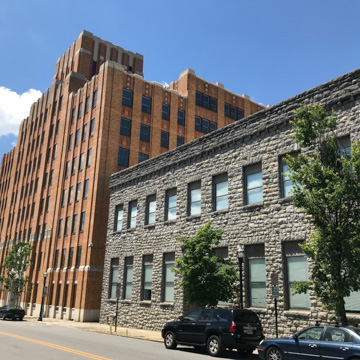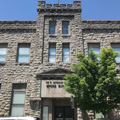You are here
Stone Building (Stone Printing Company Building)
This long, two-story structure faced in rough-faced quarry stone is a visual pun, intended or not, on the original company's name. Its entrance is marked by a three-story, crenellated tower that breaks the line of the slightly projecting banded cornice. The building hints at a stylistic bridge between late-nineteenth-century Romanesque Revival and the early twentieth century's massing and symmetry. Edward L. Stone established this company, which became one of the South's largest printing and binding companies. The building now houses the Roanoke Regional Office of the Department of Veterans Affairs.
Writing Credits
If SAH Archipedia has been useful to you, please consider supporting it.
SAH Archipedia tells the story of the United States through its buildings, landscapes, and cities. This freely available resource empowers the public with authoritative knowledge that deepens their understanding and appreciation of the built environment. But the Society of Architectural Historians, which created SAH Archipedia with University of Virginia Press, needs your support to maintain the high-caliber research, writing, photography, cartography, editing, design, and programming that make SAH Archipedia a trusted online resource available to all who value the history of place, heritage tourism, and learning.









